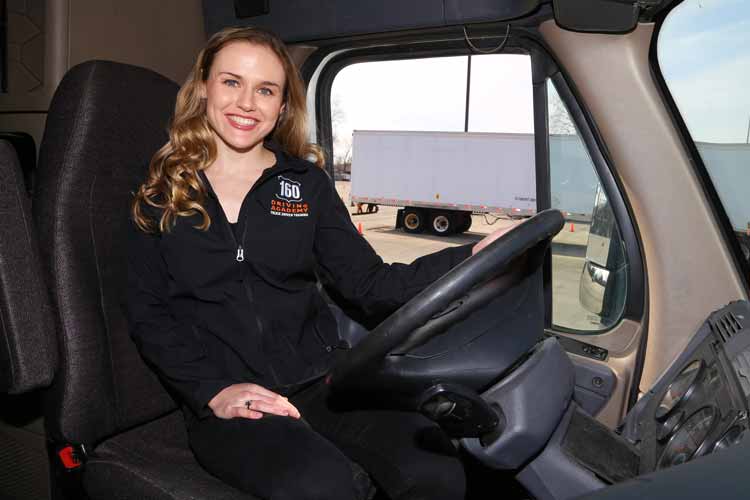Starting your journey toward becoming a professional truck driver is exciting—but also a bit overwhelming. If you’ve signed up for Entry-Level Driver Training (ELDT), congratulations! You’re taking an essential step required by the Federal Motor Carrier Safety Administration (FMCSA) since February 7, 2022. Whether you’re pursuing a Class A or B Commercial Driver’s License (CDL), a school bus (S), passenger (P), or hazardous materials (H) endorsement, ELDT is mandatory.
But what exactly happens during the first week of ELDT training? What should you prepare for? This article walks you through the details so you can enter the program confidently, knowing what to expect.
Understanding ELDT: A Quick Refresher
The Entry-Level Driver Training (ELDT) rule establishes minimum training standards for first-time CDL applicants and those upgrading their CDL or adding specific endorsements.
All training must be provided by an FMCSA-registered Training Provider Registry (TPR). The training includes both theory (classroom/online) and behind-the-wheel (BTW) instruction, and your first week usually covers the foundation of the theory portion.
Day 1: Orientation and Program Overview
Your first day is mostly administrative but still important.
What Happens:
- Meet Your Instructors and Classmates: You’ll meet the staff, fellow trainees, and be given a walk-through of the training schedule.
- Overview of the ELDT Program: The school will explain the structure, expectations, assessments, and timeline.
- Paperwork and Login Setup: You’ll fill out necessary documents and possibly set up your online learning account if the course is hybrid or remote.
Tips:
- Bring identification, your learner’s permit (if required), and any documents the school requested in advance.
- Dress comfortably, but professionally.
Day 2: Introduction to Trucking and Basic Industry Knowledge
Now the real learning begins. Your second day typically focuses on basic industry knowledge, including:
- The roles and responsibilities of a commercial driver
- FMCSA rules and regulations
- Types of commercial vehicles
- Introduction to logbooks, ELDs (Electronic Logging Devices), and Hours of Service (HOS) rules
- Overview of safety culture in trucking
This is the foundation that supports everything you’ll learn later, so pay close attention.
Day 3: Vehicle Systems and Pre-Trip Inspections
By the third day, you’ll begin learning the nuts and bolts of how trucks work.
Topics Covered:
- Understanding the major vehicle systems: brakes, engines, transmissions, steering, suspension, etc.
- Pre-trip inspection procedures: how to identify and report defects
- Introduction to DOT vehicle compliance
Some schools begin hands-on training during this phase by taking students out to examine trucks up close. Others wait until the second week.
Day 4: Basic Control Skills and Vehicle Operation Theory
Though most driving happens later, the theory around vehicle operation starts here.
You’ll Learn:
- Vehicle control techniques like shifting, steering, backing, and turning
- Handling specific driving conditions (mountains, curves, night, weather, etc.)
- Proper use of mirrors and blind spot management
Interactive Training:
Expect to watch videos, participate in discussions, and review diagrams. This is essential to help you pass the CDL written knowledge exam and prepare you for behind-the-wheel instruction.
Day 5: Emergency Maneuvers and Hazard Perception
Your first week concludes with one of the most important aspects of driving: how to avoid accidents and react to emergencies.
Topics Include:
- Hazard perception training
- Skid control and recovery
- Emergency braking and evasive maneuvers
- How to handle breakdowns and roadside safety protocols
This day often includes simulation-based learning or scenario discussions where instructors review real-life incidents and teach how to respond safely.
Additional Elements You Might Encounter in Week One
Depending on your training provider and whether you’re enrolled in a Class A, Class B, or endorsement-specific course, your first week may also include:
1. Introduction to Map Reading and Trip Planning
Understanding how to read road maps, plan fuel stops, calculate hours, and avoid restricted routes is part of trip planning theory.
2. Basic Health and Wellness for Drivers
Long-haul truck driving is physically demanding. Some programs now emphasize sleep management, nutrition, and mental health tips early in the program.
3. Introduction to Cargo Handling and Securement
While hands-on securement training typically happens later, you may start with basic rules and FMCSA regulations in week one.
Online vs In-Person ELDT Training: Does the First Week Differ?
Yes. In-person training often includes limited hands-on interaction right away—such as walking around a real truck, handling physical materials, and live Q&A sessions. Online programs, meanwhile, rely on digital modules, video walkthroughs, and quizzes.
However, FMCSA requires both formats to follow the same curriculum standards, so no matter which one you choose, you’ll receive the required instruction.
What You Won’t Do in the First Week
Many new students are excited to get behind the wheel—but the FMCSA guidelines require that you first complete most of the theory portion before progressing to behind-the-wheel (BTW) training.
So, during your first week, you likely won’t:
- Drive a truck (except possibly short intro demos)
- Take the CDL exam (that comes after completing both theory and BTW)
However, you might get scheduled for:
- Medical exams (DOT physical)
- Drug screening tests
- Practice CDL written tests
What You Should Bring to Training
Here’s a checklist of items to prepare for your first week:
- Government-issued ID (like a driver’s license)
- CDL learner’s permit (CLP), if already obtained
- Notebook or laptop for note-taking
- Water bottle, snacks, and lunch (if training center doesn’t provide)
- Closed-toe shoes or work boots for truck yard activities
- A positive, focused attitude
Common Questions About ELDT Week One
How long is ELDT training overall?
Most programs last 3 to 6 weeks, depending on the provider and state. The first week is theory-focused, with driving typically beginning in week 2.
Can I fail the theory portion?
Yes, but most providers offer additional help or retakes. Pay attention, take notes, and ask questions.
Is attendance mandatory every day?
Absolutely. FMCSA requires that you complete all elements of the course, including passing assessments.
Final Thoughts: Prepare for a Career, Not Just a License
The first week of ELDT training sets the tone for your future in commercial driving. While you won’t drive just yet, you’ll gain critical knowledge that builds a strong, safe foundation for everything that comes after.
Truck driving is a rewarding career with strong demand across the U.S., and ELDT ensures you’re not just licensed—but trained for real-world safety and success.
So go in with confidence, stay engaged, and treat each session like it’s preparing you for a million-dollar load—because, someday, it just might be.

